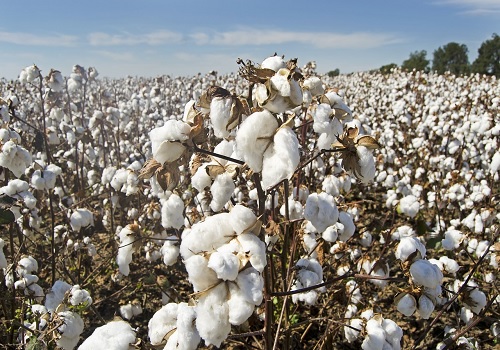Global Cotton Prices Under Pressure : Impact of Synthetic Fiber Surge by Amit Gupta, Kedia Advisory

Global cotton prices face growing pressure as synthetic fibers, led by polyester, dominate the global textile industry. Cotton consumption is forecast at 115.2 million bales for 2024/25, significantly below previous highs, as synthetic and cellulosic fibers outpace cotton in both production and affordability. China leads in synthetic fiber exports, accounting for nearly 70% of global supply, which highlights its dominance in textile manufacturing. While the U.S. and Brazil remain key exporters, cotton production struggles to grow due to competition from other crops and price constraints. Market forecasts predict stagnating demand and flat prices, leaving the industry to navigate challenges from its synthetic counterparts.
Key Highlights
* Cotton consumption expected to be stable at 115.2 million bales in 2024/25.
* Synthetic fibers continue to outpace cotton in production and affordability.
* China dominates global synthetic fiber exports, pressuring cotton’s market share.
* U.S. cotton prices remain stable at approximately 66 cents per pound.
* Competition from synthetic fibers limits potential growth in cotton demand.
Global cotton prices remain under significant pressure in 2024 as the growth of synthetic fibers - especially polyester - continues to reshape the textile landscape. Cotton consumption for the 2024/25 marketing year is expected to be around 115.2 million bales, which hovers near the ten-year average but falls short of previous record levels. The market share for cotton has been constrained by rapid advancements in synthetic and cellulosic fiber production, which benefit from lower costs and greater versatility. China plays a pivotal role in this shift, producing close to 70% of the world's synthetic fibers due to its substantial manufacturing capacity and competitive pricing.
In the United States, cotton prices have stabilized at approximately 66 cents per pound, with the export forecast slightly down to 11.3 million bales. Brazilian cotton production remains strong at 16.8 million bales, though its growth trajectory faces challenges from fluctuating demand. Globally, high competition from synthetic materials limits price increases and reduces the demand for expanding cotton acreage.
Additionally, synthetic fibers continue to offer an economical alternative, with polyester alone contributing 85% of synthetic fiber growth. This trend is expected to persist, challenging traditional cotton markets as the industry adjusts to evolving consumer and manufacturing preferences.
Finally
The cotton industry faces a challenging outlook, with synthetic fibers outpacing cotton in growth and affordability, leaving the industry to navigate sustained competition in the coming years.
Above views are of the author and not of the website kindly read disclaimer






















